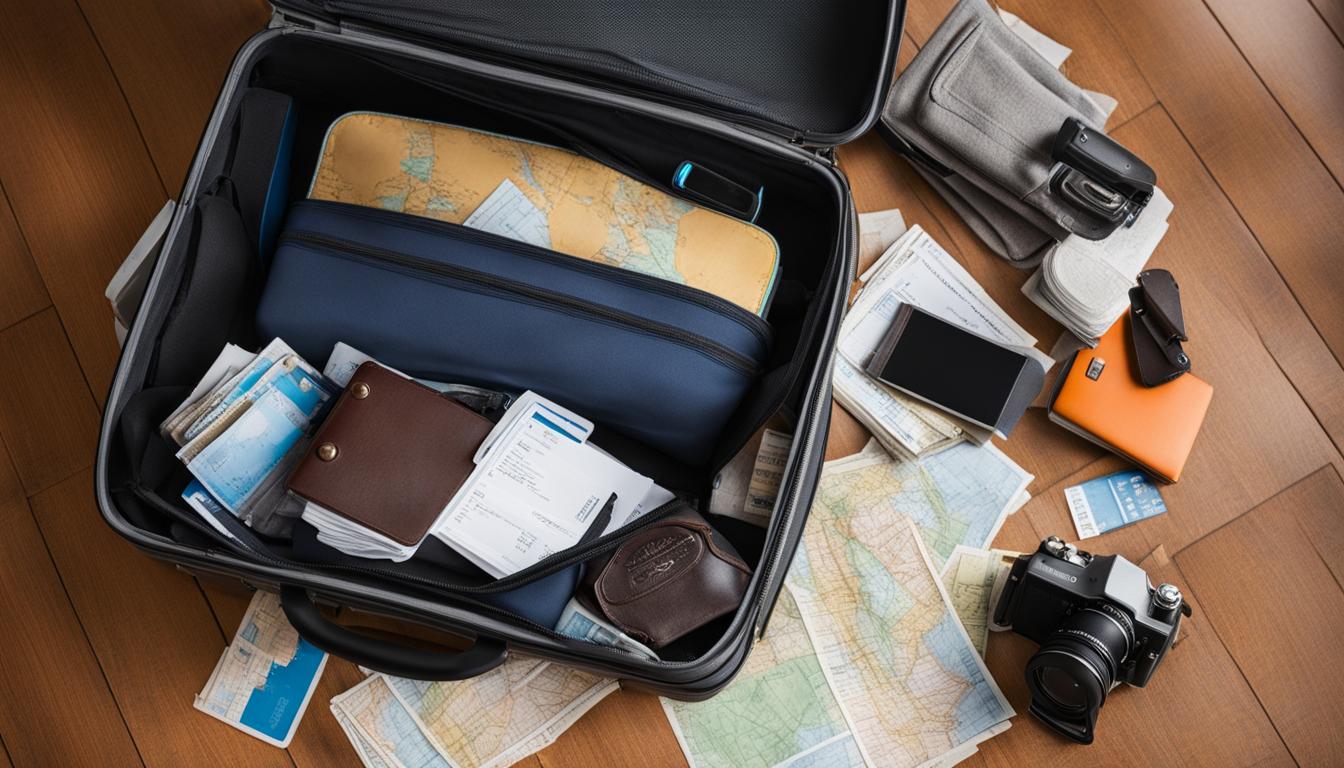Accountants
Maximise Tax Returns in Australia: Increase Your Tax Refund
Welcome to our guide on how to maximise your tax return in Australia and increase the amount of money you receive back from the Australian Taxation Office. Whether you’re an employee or a business owner, understanding the strategies and tips we’ll be sharing can help you make the most of your tax deductions and potentially put more money back in your pocket.
Key Takeaways:
- Learning how to maximise your tax return can make a big difference in your finances.
- Understanding your tax bracket is crucial for accurate tax planning and claiming deductions.
- Establishing an effective receipt system and digitising receipts can help you keep track of your expenses and claim deductions easily.
- Making charitable payments can not only benefit others but also reduce your taxable income and increase your refund.
- Explore the various tax deductions available and consult with a tax specialist to ensure you claim all applicable deductions.
Now that you have a brief overview let’s dive into the details of how you can maximise your tax returns and increase your tax refund in Australia.
Understanding Your Tax Bracket
When it comes to maximizing your tax return, understanding your tax bracket is crucial. Your tax bracket determines the percentage of your income that you are required to pay in taxes. By accurately determining your tax bracket, you can better understand your tax obligations and potential deductions.
Tax brackets can change from year to year, so it’s important to review the individual and married income tax rates from the Australian Taxation Office. These rates determine the income thresholds for each tax bracket. Once you know which bracket you fall into, you can evaluate your deductions and make informed decisions on how to best maximize your tax return.
| Tax Bracket | Income Range | Tax Rate |
|---|---|---|
| Bracket 1 | $0 – $18,200 | 0% |
| Bracket 2 | $18,201 – $45,000 | 19% |
| Bracket 3 | $45,001 – $120,000 | 32.5% |
| Bracket 4 | $120,001 – $180,000 | 37% |
| Bracket 5 | Above $180,000 | 45% |
Knowing your tax bracket not only helps you understand your tax obligations but also allows you to review your deductions more effectively. By identifying which deductions you can claim, you can reduce your taxable income and increase your tax refund.
For a comprehensive understanding of your tax bracket and to ensure you are maximizing your tax return, it’s recommended to consult with a tax specialist or accountant. They can provide personalized advice based on your specific circumstances and help you navigate the Australian Taxation Office guidelines to claim all applicable deductions.
Creating an Effective Receipt System
Keeping track of receipts is crucial for maximizing your tax return. Establishing an organized system for storing and digitizing receipts can save you money during tax season. Many expenses can be claimed as deductions, so it’s important to file away every relevant receipt and consult with an accountant to determine what you can claim. There are now apps available that can help you digitize and store receipts for easy access.
By digitizing your receipts, you can eliminate the hassle of storing physical copies and reduce the risk of losing important documents. This not only saves you time but also ensures that you have all the necessary records when it’s time to file your tax return.
When setting up your receipt system, consider using a cloud storage service to store digital copies securely. This way, you can access your receipts from any device with an internet connection. Organize your receipts by category or year to make it easier to find specific expenses when needed.
Benefits of an Effective Receipt System
- Maximizes tax deductions: By keeping a record of all your receipts, you can identify eligible expenses and ensure you claim all applicable deductions.
- Saves time and effort: Digitizing your receipts streamlines the process of organizing and accessing your documents, making tax preparation quicker and more efficient.
- Reduces the risk of errors: With a well-organized receipt system, you are less likely to miss out on deductions or make mistakes when filing your tax return.
- Provides peace of mind: Having a reliable receipt system gives you confidence that you have all the necessary documentation to support your claims.
“A well-organized receipt system is an essential tool for maximizing your tax return. By implementing digital solutions and maintaining an organized approach, you can ensure that you claim all eligible deductions and save money in the process.” – Australian Tax Specialist
Overall, creating an effective receipt system is crucial for maximizing your tax return. By digitizing and organizing your receipts, you can streamline the tax filing process, ensure accuracy, and claim all applicable deductions. Consult with a tax specialist to understand the specific requirements and guidelines for your situation, and make use of available digital tools to simplify the process. With a well-organized receipt system, you can keep more of your hard-earned money in your pocket.
| Deduction Category | Examples |
|---|---|
| Work-related expenses | Travel expenses, uniform costs, professional development courses |
| Home office expenses | Rent, utilities, internet bills |
| Charitable donations | Receipts from donations made to registered charities |
| Education expenses | Tuition fees, textbooks, course materials |
Making Charitable Payments for Tax Savings
When it comes to maximizing your tax return, making charitable payments can be a smart strategy. Not only are you contributing to a good cause, but you can also reduce your taxable income and increase your tax refund. By donating to registered charities, you can claim tax deductions that can significantly impact your overall tax liability.
To ensure your charitable payments are eligible for tax savings, it’s essential to keep proper records and obtain official receipts from the organizations you support. These receipts serve as proof of your contributions and can be submitted when filing your tax return. Remember, donations must be made to registered charities in order to qualify for tax deductions.
“Giving back to the community not only benefits those in need but can also benefit you financially. By making charitable payments, you can reduce your taxable income and potentially receive a higher tax refund.”
There are various ways to make charitable payments and claim tax deductions. One option is to set up monthly donations to your chosen charity. This not only ensures a consistent contribution but also allows you to spread out your donations throughout the year, maximizing your overall tax savings. Additionally, consider donating items such as clothing, furniture, or electronics to charitable organizations, as these donations can also be claimed as deductions.
Remember, when it comes to charitable payments, it’s important to consult with a tax specialist or accountant who can guide you through the process and ensure you’re taking full advantage of the available tax deductions. They can provide personalized advice based on your specific financial situation and help you navigate the Australian tax system.
Table: Tax Deduction Limits for Charitable Payments
| Donation Type | Tax Deduction Limit |
|---|---|
| Cash donations | Up to 100% of your taxable income |
| Donations of property | Market value of the property |
| Donations of listed shares or securities | Market value of the shares or securities |
By making charitable payments and claiming tax deductions, you not only support causes you care about but also benefit from potential tax savings. Remember to keep accurate records, consult with a tax specialist, and donate to registered charities to ensure your contributions are eligible for deductions. Together, we can make a difference and make the most of our tax returns.

Maximising Your Deductions
When it comes to filing your tax return, claiming deductions is a key strategy to maximise your refund. By understanding the Australian Taxation Office (ATO) guidelines and knowing what deductions you’re eligible for, you can potentially reduce your taxable income and increase your tax refund. Here are some important deductions to consider:
Work-Related Expenses
Did you know that you can claim deductions for certain work-related expenses? This includes expenses such as uniforms, tools, and equipment required for your job. Keep track of your receipts and consult the ATO guidelines to determine which expenses are eligible for deduction.
Education and Training
If you’ve taken any courses or attended training events directly related to your profession, you may be able to claim deductions for the associated expenses. This can include fees, travel expenses, and study materials. Be sure to keep records of your education and training expenses and consult with a tax specialist to ensure you claim all applicable deductions.
Home Office Expenses
If you have a dedicated space in your home that you use for work purposes, you may be eligible to claim deductions for home office expenses. This can include a portion of your rent or mortgage interest, utilities, and furniture purchased for your home office. Keep detailed records of your expenses and consult with a tax specialist to determine the amount you can claim.
| Deduction Category | Examples |
|---|---|
| Work-Related Expenses | Uniforms, tools, equipment |
| Education and Training | Course fees, travel expenses, study materials |
| Home Office Expenses | Rent/mortgage interest, utilities, furniture |
Claiming deductions correctly can significantly impact your tax return. It’s important to keep accurate records, stay informed about the ATO guidelines, and consult with a tax specialist if needed. By maximising your deductions, you can potentially increase your tax refund and keep more money in your pocket.
Maximising Home and Car Expense Deductions
When it comes to maximising your tax return, don’t overlook the potential deductions you can claim for expenses related to your home office and car. If you use your car for work purposes or have a dedicated space at home for work, you may be eligible for additional deductions that can increase your tax refund.
Home Office Expenses: If you have a designated area in your home that is used solely for work, you can claim deductions for expenses related to that space. This includes rent or mortgage interest, utilities, internet bills, and even depreciation of furniture or equipment. Keeping detailed records and receipts of these expenses is crucial to ensure you can claim the maximum deductions.
Car Deductions: If you use your car for work-related purposes, such as traveling to meet clients or attending business meetings, you may be eligible for car expense deductions. You can claim either the actual expenses incurred for using your car, such as fuel, maintenance, and insurance, or use the standard mileage rate provided by the Australian Taxation Office. Regardless of the method, it’s important to keep accurate records of your car usage and expenses.
Example: Home Office Expenses
| Expense | Amount |
|---|---|
| Rent | $800 per month |
| Internet | $60 per month |
| Electricity | $100 per month |
| Total | $960 per month |
Example: Car Expense Deductions
| Expense | Amount |
|---|---|
| Fuel | $500 |
| Maintenance | $300 |
| Insurance | $200 |
| Total | $1,000 |
Remember, it’s essential to keep accurate records and receipts for all home office and car expenses to support your claims. Consult with a tax specialist to ensure you meet all the requirements for claiming these deductions and to maximize your tax refund.
By taking advantage of the deductions available for home office expenses and car usage, you can significantly increase your tax refund. Remember to keep detailed records, consult with a tax specialist, and stay up to date with the Australian Taxation Office guidelines to ensure you’re maximizing these deductible expenses.
Maximising Travel Expense Deductions
When it comes to work-related travel, there are various expenses that you may be eligible to deduct, helping you to maximise your tax return. Whether it’s accommodation, meals, transportation, or other travel-related costs, keeping records of your expenses is key to claiming these deductions. By understanding the rules and consulting with a tax specialist, you can ensure that you take advantage of all eligible deductions.
Eligible Travel Expenses
Work-related travel can include attending conferences, meeting clients, or visiting job sites. It’s important to keep in mind that the expenses must be related to your occupation and directly incurred in the course of your work. Some common eligible travel expenses may include:
- Transportation costs – such as airfare, train or bus tickets, and car rentals.
- Accommodation expenses – including hotel stays or rental properties.
- Meals and entertainment – while traveling for work purposes.
- Miscellaneous expenses – such as parking fees, tolls, and baggage fees.
By keeping detailed records and collecting relevant receipts, you can support your claim for these expenses and increase the likelihood of receiving deductions on your tax return.
“Work-related travel can be a significant expense for many individuals. By understanding the eligible deductions and keeping proper documentation, you can optimize your tax return and potentially save a substantial amount of money.”
Maintaining Accurate Records
When it comes to claiming travel expenses, accurate record-keeping is crucial. This includes collecting receipts, documenting the purpose of the trip, and maintaining a travel diary or logbook to record the details of your journeys. The Australian Taxation Office (ATO) may require this information as evidence to support your deductions, so it’s important to keep these records organized and easily accessible.
Consulting with a Tax Specialist
Navigating tax laws and understanding the intricacies of travel expense deductions can be complex. Consulting with a tax specialist can provide valuable guidance and ensure that you are maximizing your deductions within the bounds of the law. They can help you review your records, identify eligible expenses, and advise you on the best practices for claiming these deductions on your tax return.

Summary
When it comes to maximizing your tax return, travel expenses can be a significant area for potential deductions. By understanding what expenses are eligible, keeping accurate records, and seeking professional advice, you can ensure that you are claiming all applicable deductions and optimizing your tax return.
Claiming Deductions for Subscriptions
As professionals in our respective fields, it’s important to stay up-to-date with the latest industry trends and developments. Subscribing to industry publications and journals not only helps us stay informed but can also be considered a deductible expense if it directly relates to our line of work and contributes to our assessable income.
Subscriptions to industry magazines or journals can provide valuable insights, research, and case studies that can enhance our expertise and professional growth. Whether it’s food magazines for chefs, marketing publications for marketers, or online news subscriptions for journalists, these subscriptions can offer valuable knowledge and resources.
When claiming deductions for subscriptions, it’s essential to keep receipts as proof of purchase. This ensures that you have the necessary documentation to support your claim if required by the Australian Taxation Office (ATO). By organizing your receipts and documenting your subscriptions, you can maximize your deductions and potentially increase your tax refund.
Claiming Deductions for Subscriptions: Example
| Subscription | Cost | Assessable Income Impact |
|---|---|---|
| Industry Magazine A | $50 | Directly contributes to professional development |
| Industry Journal B | $100 | Provides research and insights for work projects |
| Online News Subscription C | $30/month | Keeps up-to-date with industry news for journalistic reporting |
In the example table above, the deductions for subscriptions are clearly outlined. Each subscription is considered a deductible expense as it directly relates to the individual’s line of work and contributes to their assessable income. By claiming these deductions, the individual can reduce their taxable income and potentially increase their tax refund.
Remember, it’s always important to consult with a tax specialist or accountant when claiming deductions. They can provide guidance based on your specific circumstances and ensure that you’re maximizing your deductions within the guidelines set by the ATO.
Increase Tax Returns with Super Fund Contributions
Contributing to a super fund can be one of the most effective ways to maximize your tax return. By making regular contributions, you not only secure your financial future but also take advantage of government contributions and tax offsets. It’s a win-win situation that allows you to grow your savings while reducing your taxable income.
For workers earning less than $52,000 a year, the government offers co-contributions for every dollar they contribute to their super fund. This means that by simply adding to your super, you receive additional funds from the government. It’s like getting free money to boost your retirement savings.
Another way to increase your tax return is through the spouse super contribution tax offset. If one partner earns less than $40,000, the higher-earning partner can contribute to their spouse’s super fund and receive a tax offset. This offsets the tax paid on the contribution, effectively reducing the overall tax liability and increasing the refund amount.
Maximizing your super contributions not only helps you save for retirement but also provides immediate tax benefits. Consult with a financial advisor to determine the best strategy for your situation and make the most of these opportunities.

Table: Government Contributions for Super Fund Contributions
| Income Range | Government Co-Contribution |
|---|---|
| <$38,564 | Up to $500 |
| $38,564 – $41,564 | Gradually reduces |
| >$41,564 | No government co-contribution |
Source: Australian Taxation Office
Tips for Preparing Your Tax Return
Preparing your tax return can be a daunting task, but with the right tips and strategies, you can make the process easier and maximize your tax refund. Here are some valuable tips to help you navigate through tax preparation:
Gather all necessary documents:
Before you begin preparing your tax return, make sure you have all the necessary documents and paperwork in order. This includes your W-2 forms, 1099s, receipts for deductions, and any other relevant financial records. Having everything organized will save you time and ensure that you don’t miss any important details.
Take advantage of tax deductions:
One of the key ways to maximize your tax refund is to take advantage of all available tax deductions. These deductions can help reduce your taxable income and ultimately increase your refund. Make sure you are aware of the deductions you qualify for, such as educational expenses, business-related travel, or home office expenses. Keep thorough records and consult with a tax specialist to ensure you claim all applicable deductions.
Use tax preparation software:
Using tax preparation software can greatly simplify the process of preparing your tax return. These software programs guide you through each step and ensure that you don’t overlook any important details. They also help you accurately calculate your deductions and maximize your refund. Look for reputable tax preparation software that is compatible with the Australian tax system for a seamless experience.
By following these tax preparation tips, you can navigate the process more effectively and increase your chances of maximizing your tax refund. Remember to keep thorough records, consult with professionals when needed, and stay up to date with any changes in tax laws and regulations. With careful preparation, you can ensure an accurate and successful tax return.

How Tax Refunds Work in Australia
Understanding how tax refunds work in Australia is essential for maximizing your return. In Australia, tax refunds are issued by the Australian Taxation Office (ATO) after you have lodged your tax return and have been assessed for the applicable financial year. The amount of the refund is determined by the amount of tax you have paid throughout the year and any deductions or offsets you are eligible for.
When you submit your tax return, the ATO calculates your taxable income based on the information you provide, such as your employment income, investment earnings, and deductions. If the amount of tax you have paid throughout the year exceeds your calculated tax liability, you will be eligible for a refund. Similarly, if you have claimed deductions or offsets that reduce your taxable income, you may also receive a larger refund.
Once your tax return is processed, the ATO will issue your refund either by direct deposit into your nominated bank account or by sending you a check. The processing time for refunds can vary depending on the complexity of your return and the volume of returns being processed by the ATO. Typically, refunds are issued within a few weeks to a few months after lodgment.
Key Points:
- Tax refunds in Australia are issued by the ATO.
- The refund amount is determined by the tax paid and any deductions or offsets claimed.
- Refunds can be received by direct deposit or by check.
- Processing time for refunds varies but is usually a few weeks to a few months.
Table: Australian Tax Refund Process
| Step | Description |
|---|---|
| 1 | Lodge your tax return with the ATO. |
| 2 | The ATO calculates your taxable income and assesses your deductions and offsets. |
| 3 | If you have paid more tax than your calculated liability, you are eligible for a refund. |
| 4 | The ATO processes your return and issues your refund. |
| 5 | Refunds are typically received within a few weeks to a few months. |
By understanding the process of how tax refunds work in Australia and following the tips and strategies outlined in this guide, you can increase your chances of receiving a sizable tax refund. Remember to keep accurate records, claim all eligible deductions and offsets, and submit your tax return in a timely manner to ensure a smooth refund process. If you have any questions or need assistance, you can contact the ATO directly or consult with a tax specialist.

Take Control of Your Tax Return
When it comes to maximizing your tax return, taking control is key. By implementing the tips and strategies outlined in this guide, you can ensure that you’re keeping more of your hard-earned money in your pocket. However, we understand that navigating the Australian tax system can be overwhelming, which is why working with a tax specialist can provide you with personalized advice and guidance.
A tax specialist has a deep understanding of the tax laws and regulations in Australia. They can help you identify all the deductions you may be eligible for, ensuring that you claim everything you’re entitled to. With their expertise, you can rest assured that your tax return is accurate, minimizing the risk of any issues with the Australian Taxation Office.
Working with a tax specialist also offers peace of mind. They can handle the complex paperwork and calculations, saving you time and stress. Additionally, they can provide valuable insights and proactive tax planning, helping you make strategic decisions that can further maximize your tax return.
So, whether you’re a small business owner, a freelancer, or an individual taxpayer, taking control of your tax return is essential. By enlisting the help of a tax specialist, you can navigate the intricacies of the Australian tax system with confidence, ensuring that you’re making the most of every opportunity to maximize your tax return.
FAQ
How can I accurately determine my tax bracket?
You can review the individual and married income tax rates from the Australian Taxation Office to understand your tax obligations and potential deductions.
Why is keeping track of receipts important for maximizing my tax return?
Keeping track of receipts allows you to claim relevant expenses as deductions, which can increase your tax refund. It’s important to establish an organized system for storing and digitizing receipts for easy access.
How can making charitable payments help increase my tax refund?
Making charitable payments can reduce your taxable income and increase your tax refund. Keeping receipts as proof of your contributions is important when claiming this deduction.
What deductions may I be eligible for when filing my tax return?
There are numerous deductions that you may be eligible for, such as business travel, work-related training events, educational courses, and work-related supplies. Reviewing the Australian Taxation Office guidelines and working with a tax specialist can help ensure you claim all applicable deductions.
How can I maximize deductions for home and car expenses?
By keeping track of car mileage and expenses, you can claim deductions for using your car for work. Similarly, expenses related to your home office, such as equipment and utilities, can also be claimed as deductions. Detailed records and guidance from a tax specialist are important in this process.
What travel expenses can I deduct on my tax return?
If your job requires you to travel for work, you may be eligible to deduct various travel expenses, including accommodation, meals, transportation, and more. Keeping records of your travel expenses and consulting with a tax specialist can help ensure you claim all eligible deductions.
Are subscriptions to industry magazines or journals deductible?
Yes, subscribing to industry magazines or journals relevant to your line of work and income can be considered a deductible expense. Be sure to keep receipts for these subscriptions as proof.
How can contributing to a super fund maximize my tax return?
Workers who earn less than $52,000 a year can receive government contributions for each dollar they contribute to their super. Additionally, the higher earning partner can contribute to the super of their partner earning less than $40,000 and receive a tax offset. Consulting with a financial advisor can help determine the best strategy for maximizing your super contributions.
What tips can help me prepare my tax return?
Use apps and tools to stay organized, familiarize yourself with tax laws, and consider working with a tax professional to ensure accuracy in your tax preparation.
How do tax refunds work in Australia?
Tax refunds are often considered a bonus and can be used to pay down debt, save, or invest. Understanding the Australian tax system and following the tips provided in this guide can increase your chances of receiving a sizable tax refund.
How can I take control of my tax return?
By implementing the tips in this guide, such as organizing receipts, maximizing deductions, and understanding the tax system, you can increase your chances of keeping more of your hard-earned money. Consider working with a tax specialist for personalized advice and guidance through the Australian tax system.

